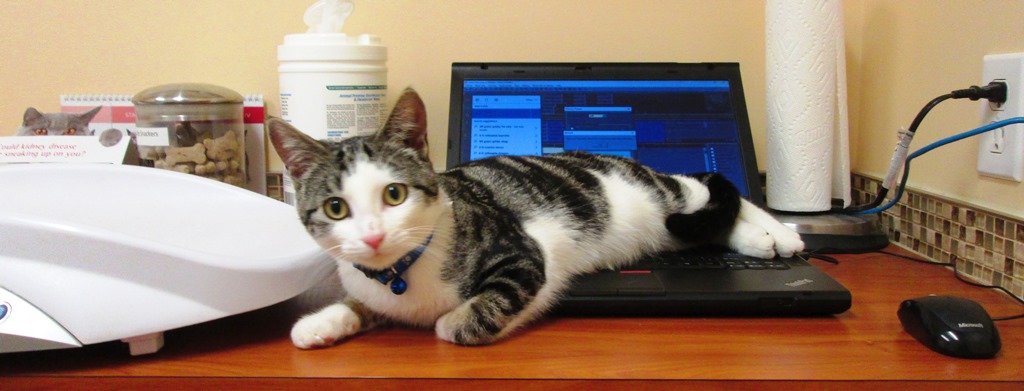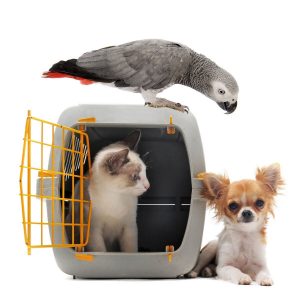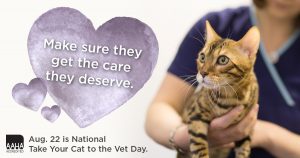
Overcoming Barriers to Veterinary Visits
Once the client arrives at the veterinary clinic, the health-care team can take steps to reduce stress for both the client and the cat, as is feasible for their situation.12 See below for some ideas for the waiting client and cat, and some tips to facilitate examination and treatment.
Reducing the stress of transport
- Socialize kittens to the carrier and to travelling:
- Keep the transport carrier out and accessible in the home.
- Create and maintain a positive association with the transport carrier by making it a comfortable resting, feeding or play location.
- When feasible, and if the cat is neutral or favorably inclined to car travel, encourage owners to take the cat on periodic car rides paired with positive experiences.
- Withholding food prior to travel may prevent motion sickness, increase interest in treats at the clinic, and is beneficial if blood is to be collected.
- Apply a calming synthetic pheromone to, and/or place familiar clothing from a favorite person in, the carrier on a routine basis and just prior to transport.13,14
- Provide cover/hiding options in or over carrier (eg, blanket draped over carrier) during transport.
Making the cat and client comfortable at the clinic
- Provide a separate waiting room for cats, or ensure their immediate placement into an exam room.
- Minimize waiting times.
- Provide elevated platforms in the waiting area so owners can place cat carriers out of reach of dogs.
- Use calming synthetic pheromones in the environment.14
Facilitating the examination and treatment
- Provide a cat-friendly exam room:
- Keep the room and table warm, with a non-slip surface for the cat.
- Avoid loud noises or ambient sounds that may mimic hissing (eg, whispering).
- Distract and reward with tasty treats/catnip/play.
- Handle using minimal restraint:
- See AAFP Feline Behavior Guidelines for tips on handling cats during the veterinary examination.10
- While gathering historical information, allow the cat time to adjust to the surroundings by removing the top or opening the door of the carrier. The cat should ideally remain in the bottom half of the carrier for as much of the exam as possible; this allows it to adjust to the examiner and the environment.15,16
- Allow the cat to hide partially under a towel; use towels, rather than scruffing, for handling where additional restraint is needed.
- Avoid making eye contact with the cat.
- Determine the most comfortable position for the cat during the examination, such as the veterinarian’s lap.
- Use sedation, anesthesia or analgesics as indicated to reduce stress and/or pain.
- Keep hospitalized cats away from dogs and out of visual range of other cats.17

